Lockheed Martin has been awarded $10.9 million for the management, sustainment, and upgrade of the Tactical Tomahawk Weapons Control System software product baseline and the required system and software documentation for the US Navy and the Royal Navy.
According to the contract announcement:
“Lockheed Martin Corp., Lockheed Martin – Rotary and Mission Systems, King of Prussia, Pennsylvania, is awarded $10,939,237 for cost-plus-fixed-fee delivery order N00019-18-F-2684 against a previously issued basic ordering agreement (N00019-15-G-0057). This delivery order provides for the management, sustainment, and upgrade of the Tactical Tomahawk Weapons Control System software product baseline and the required system and software documentation for the Navy and the government of the United Kingdom.
Work will be performed in King of Prussia, Pennsylvania (98 percent); and Patuxent River, Maryland (2 percent), and is expected to be completed in January 2020. Fiscal 2019 other procurement (Navy); fiscal 2019 research, development, test and evaluation (Navy); fiscal 2019 operations and maintenance (Navy) funds; and foreign military sales funds in the amount of $10,939,237 will be obligated at time of award, $1,361,805 of which will expire at the end of the fiscal year.
This order combines purchases for the Navy ($8,687,257; 79.4 percent); and the government of the United Kingdom ($2,251,980; 20.6 percent) under the Foreign Military Sales program. The Naval Air Systems Command, Patuxent River, Maryland, is the contracting activity.”
The Tomahawk missile, also known as TLAM, allows Royal Navy submarines of the Astute and Trafalgar class to strike at targets on land accurately at a range of around 1,000 miles.
The missile is a highly accurate, GPS-enabled weapon that the US and allied militaries have used more than 2,000 times in combat, and flight-tested 500 times say the manufacturer.
In April 2017, US Navy destroyers launched 59 Tomahawk cruise missiles at targets on a Syrian air base. In 2014, a US Navy destroyer and a guided missile cruiser launched 47 Tomahawk missiles in a strike on the Islamic State terrorist group in Syria.

It’s important to remember that Tomahawk is a cruise missile, so rather than taking on a ballistic trajectory, it stays close to the ground, steering around terrain features, using a jet engine instead of a rocket engine to fly. It is hoped that by the missile keeping low—because of its small radar signature—the Tomahawk avoids radar-guided defences that can threaten manned aircraft.
The missile has been in use with the Royal Navy since the late 1990s and has been used in the Kosovo conflict and in the campaigns against the Taliban, Saddam Hussein and Gaddafi.
The missile is fired from a boat’s torpedo tubes. Once it reaches the surface, a booster rocket ignites to propel the missile skywards. Tomahawk then heads for its target at 550 mph, delivering a 1,000 lb explosive warhead.
The Tomahawk IV is the latest version of the missile operated by the British submarine fleet. It has a longer range than its predecessors and can be directed at a new target in-flight, and can also beam back images of the battlefield.
According to a US Navy factfile:
“Tomahawk cruise missiles are designed to fly at extremely low altitudes at high subsonic speeds, and are piloted over an evasive route by several mission tailored guidance systems. The first operational use was in Operation Desert Storm, 1991, with immense success. The missile has since been used successfully in several other conflicts.
In 1995 the governments of the United States and United Kingdom signed a Foreign Military Sales Agreement for the acquisition of 65 missiles, marking the first sale of Tomahawk to a foreign country. In 2003, an agreement was approved for the United Kingdom to procure 65 Block IV Torpedo Tube Launch Tomahawks. The United Kingdom began to receive Block IV missile deliveries in January 2008 and successfully declared their In-Service-Date in March 2008.”
Tomahawk currently planned to be phased out of service in the American Navy with no more weapons to be produced, meaning that it may no longer be an option for the Royal Navy from around the end of the decade.
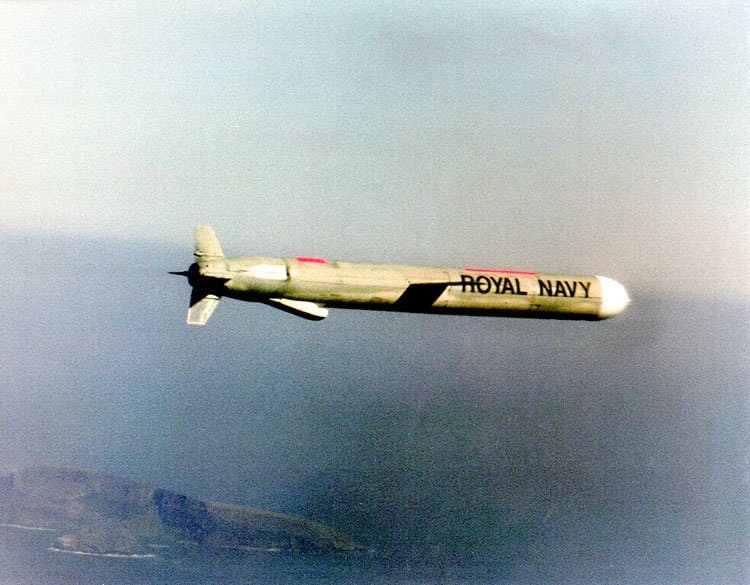
The UK last bought 65 Tomahawk Land Attack Missiles in July 2014.
According to Raytheon, these are the general specifications:
| Primary Function: Long-range subsonic cruise missile for striking high value or heavily defended land targets. |
| Contractor: Raytheon Missile Systems Company, Tucson, AZ. |
| Date Deployed: Block II TLAM-A IOC – 1984 Block III – IOC 1994 Block IV – IOC 2004. |
| Propulsion: Block II/III TLAM-A, C & D – Williams International F107 cruise turbo-fan engine; ARC/CSD solid-fuel booster |
| Length: 20.3 feet; with booster: 20 feet 6 inches (6.25 meters). |
| Diameter: 21 inches |
| Wingspan: 8 feet 9 inches (2.67 meters). |
| Weight: 3,330 pounds with rocket motor. |
| Speed: Subsonic – about 550 mph (880 km/h). |
| Range: Block III TLAM-C – 900 nautical miles (1000 statute miles, 1600 km) Block III TLAM-D – 700 nautical miles (800 statute miles, 1250 km Block IV TLAM-E – 900 nautical miles (1000 statute miles, 1600 km) |
| Guidance System: Block II TLAM-A – INS, TERCOM Block III TLAM-C, D Block IV TLAM-E – INS, TERCOM, DSMAC, and GPS. |
| Warhead: Block II TLAM-N – W80 nuclear warhead. Block III TLAM-C and Block IV TLAM-E – 1,000 pound class unitary warhead. Block III TLAM-D – conventional submunitions dispenser with combined effect bomblets. |


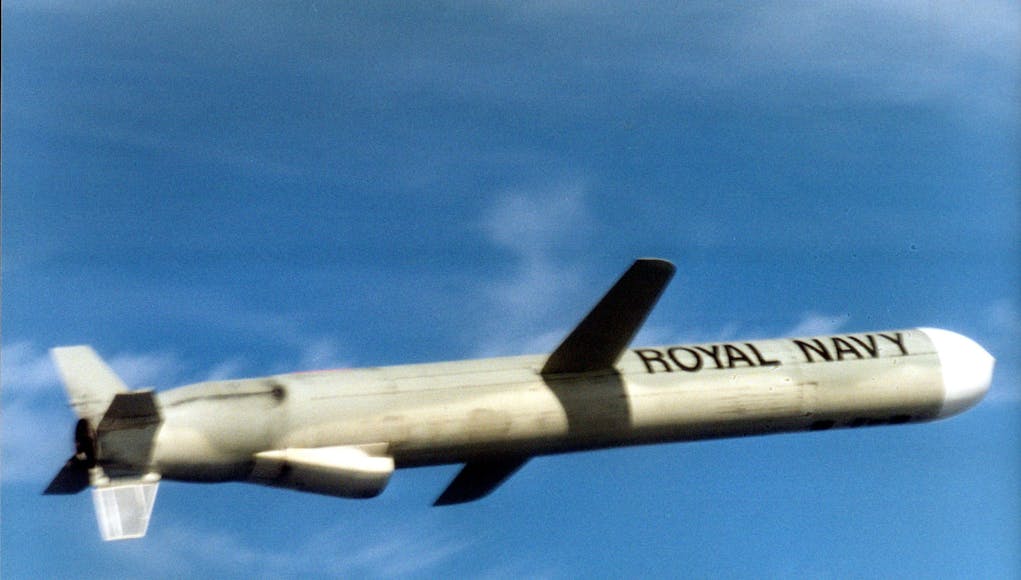
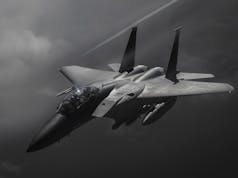

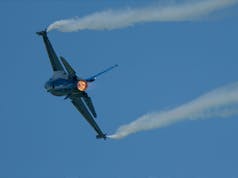

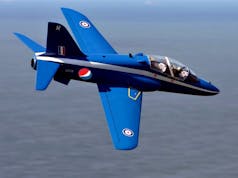
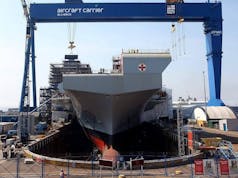
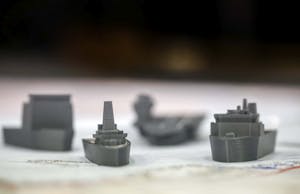









nice
All good having an upgrade I suppose in the short term, well up to 2040.
Are we to wait around until the Yanks bring in LRASM and NGLAW.
Or should we be buying our Anti-ship and newer TLAM elsewhere!
TLAM has a 30 year life span but given the few we have and production has ceased then we will run out of them very easily so expect them to be used sparingly.RAF and surface ships will get the new anglo/french missile but nothing’s been said about replacing Tomahawk.
The US has thousands of them in stock pile so my guess is they closed the production line as they don’t see the point making them when they are not going to run out anytime soon.
The UK could also purchase directly from US stocks if they burn through their own, which is probably why they ordered so few. No point in having hundreds of millions sitting in a secure warehouse somewhere if someone else will store them until you need them for you.
I believe the main reason they ordered so few was not to upset the RAF as it trespasses on their deep strike role.At some point the U.S. navy is going to say sorry get your own since they predominantly have different versions not the torpedo tube launched variant.
The lack of planned TLAM replacement is worrying, it’s the most useful weapon in the US and UK Arsenal. LRASM will be a useful weapon but lacks the range to be a TLAM replacement. The new British French Perseus style weapon may also lack range to be a true replacement.
While the last 100 Tomahawk for the USA are being produced, I would think it wise for the UK to top up its stock as well.
The Americans are upgrading theirs to block V.
I would think the UK needs more Tomahawk to fill the T26 silos until a future land attack missile comes along.
Type 26 will get whatever comes out of the joint anglo french project this has all ready been stated.We should indeed buy more Tomahawks they are not that expensive and 65 is a ridiculous number.The RN all ready seems reticent about using them as we have only used Stormshadow in the most recent actions.